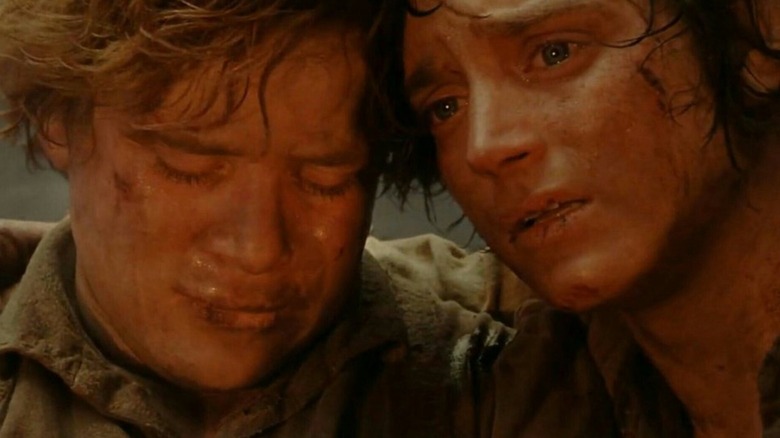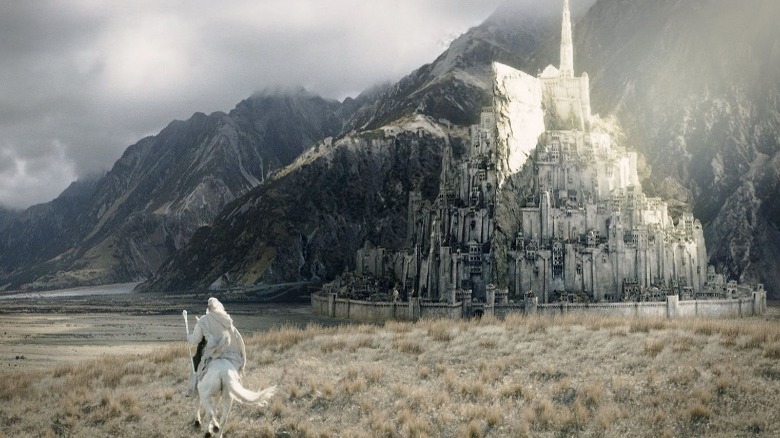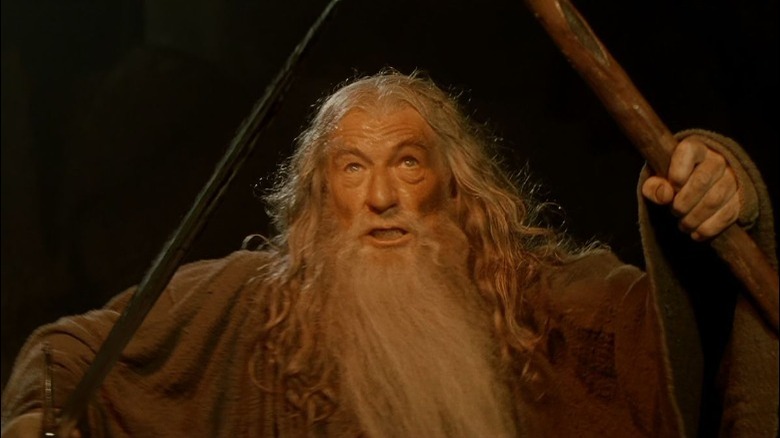Almost Every Line In The Lord Of The Rings Had To Be Painstakingly Re-Recorded
"The Lord of the Rings" is one of the most ambitious filmmaking projects of all time, a technical achievement whose attention to detail mirrors the grand literary world-building of J.R.R. Tolkien himself. The scrupulous process to bring Middle-earth to life required a massive team of artists, all making sure that each individual piece of the film fit neatly as a part of a whole. That line of due diligence ran all the way down to the recording of the dialogue, which had to be almost entirely done in post-production due to the on-location environments and epic scale of the actual production.
Automated dialogue replacement, or ADR as it's most commonly shortened to, is an extremely common and essential practice within filmmaking. There's always the potential for noise contamination in the process of live audio recording, especially during an on-location shoot. Auditory blemishes like wind, traffic, and the random clicks and hums from equipment can make the captured dialogue incomprehensible. These accidents can easily occur during the production of even the most intimate and quiet of indie films, so it's no wonder that a project as grand and epic in scale as "The Lord of the Rings" had to make up for live audio issues in post.
The epic sound problem with making an epic
The natural environment of New Zealand provided "The Lord of the Rings" with now-famous on-set locations that mimicked the sweeping landscapes of Middle-earth. That also meant that the shoot was subject to all sorts of bellowing sounds, but even the soundstages in Wellington weren't safe from outside noise. The One Ring fan forums quotes sound recorder Hammond Peek recalling in an issue of "The Lord of the Rings Fan Club Official Movie Magazine" that much of the shooting was subject to the sounds of the planes from nearby Wellington airport. He says:
"A lot of the time we would stop and wait until the plane flew over that particular studio. But 'The Lord of the Rings' was such a big production that, often, time was money and it became a money equation. If we spend so much of a day waiting for planes, then that represents so many dollars for such a huge crew and operation and gear hire. It is a lot cheaper just to look at post-syncing those lines [recording them again later in a studio]."
The aches of ADR
Despite the cost-effectiveness of post-production ADR, however, dialogue editor Ray Beentjes explained in the magazine "Sound & Picture" how this process can be heartbreakingly disappointing in regards to an actor's original performance:
"An actor could have delivered a stellar performance on location, but the audio would often be unusable... They would then have to spend hours in a dubbing room re-recording their lines, and due to the complexity of the production, they might be covering what was six months' worth of filming in a two-day ADR session. That often makes it very difficult to create the same mood again."
That might sound like an actor's worst nightmare, although Ian McKellan noticeably said in "Empire" magazine that "ADR is fun" and "a technical challenge that sometimes can improve original readings." If anyone was able to take on this daunting task, though, it's director Peter Jackson, whose recent documentary works prove his obsession with restoring sound and matching new dialogue to previous footage. It's him and his tireless sound crew to thank for the impeccable audio design of "The Lord of the Rings."


